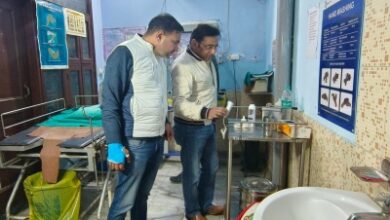
Mumbai, Aug 18: In a shocking incident, a stray dog suffered severe burn injuries and lost one of its eyes after a woman attacked him with acid in Malvani area of the city, sources said on Friday.
Thirty-five-year-old Sabista Ansari’s reason for the attack was reportedly attributed to the dog (Brownie)’s interactions with the cats she used to feed in her building. The incident took place on August 17.
The incident was captured on CCTV within the housing society, shedding light on the shocking act. Upon learning of the incident, celebrity Jaya Bhattacharya, a TV actor, and her team stepped in to rescue Brownie.
Brownie was then rushed to Thank You Earth, an NGO founded by Bhattacharya, which specialises in the rescue and treatment of animals in need.
Bhattacharya revealed that they promptly reported the incident to the police as requested, along with a doctor’s certificate detailing Brownie’s injuries.
“It is shocking that someone who feeds cats would attack another animal,” Bhattacharya stated. The CCTV footage captured the moment when Ansari allegedly threw acid on Brownie, causing the dog to run frantically in pain.
The Malvani police have registered an FIR against Ansari under various sections of the Indian Penal Code, the Prevention of Cruelty to Animals Act, and the Maharashtra Police Act.
In his complaint, Balasaheb Tukaram Bhagat, a resident of the housing society, detailed Brownie’s presence
within the community for five years and how Ansari often chased away the dog when interacting with the cats she fed.
Several animal welfare organisations also condemned the act and stressed on the need for addressing such matters responsibly.





